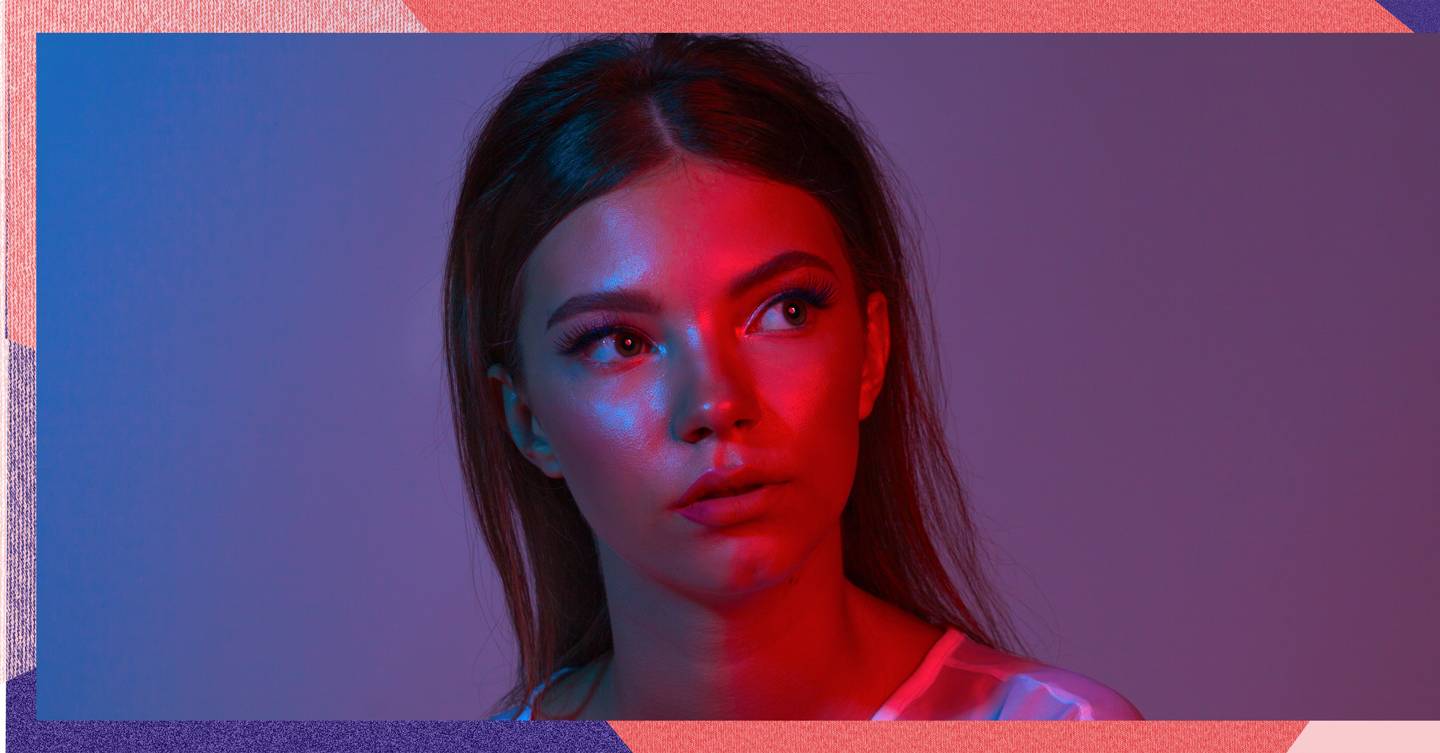Unless you’ve been living under a beauty rock, you’ll likely have noticed that LEDs (Light-Emitting Diodes) are pretty big news right now. Besides being money-saving light bulb alternatives (seriously you need to get on board), LEDs have proved themselves as skincare powerhouses in recent years.
Chances are, you’ve already seen the LED trend all over your Instagram feed. Hollywood’s finest, from Victoria Beckham to Chrissy Teigen, are all fans of the futuristic, yet somewhat scary looking, LED masks. But what exactly are those luminous veils, and what is it that they claim to do?
The masks are actually just a form of what is commonly referred to as LED light therapy – a treatment commonly used to minimise breakouts and generally improve the condition and appearance of the skin. Although mostly broadcast on the ‘Gram as an all-new, at-home skincare trend, LED light therapy has been used in clinics as a powerful skin treatment for years.
And while devoted fans have been singing the praises of LED light therapy for some time, only recently have clinics started to notice signs that the benefits of a session could be more than just skin deep. Client feedback is starting to suggest that a short period of time spent under in-clinic LED lamps could have a dramatic impact on mood – lifting users’ spirits, decreasing stress and improving energy levels.
Is it too good to be true? We enlist the help of Pamela Marshall, Clinical Aesthetician and Co-Founder of Mortar & Milk, to reveal everything you need to know about using LED light therapy for both your skin and your mood…
What is LED light therapy?
LED light therapy is a painless, non-invasive skin treatment whereby a person’s face (or in some cases other parts of the body) is exposed to an array of Red, Blue and Near-Infrared LED lights. Pamela explains: “LED light therapy uses photon energy in order to regenerate cells, reduce inflammation, heal wounds, scatter melanocyte clusters, reduce acne and increase skin rejuvenation. Blue, Red and Near-Infrared work in combination with each other (or separately).”
How does it benefit the skin?
When used regularly, LED light therapy is thought to be able to reduce breakouts, rosacea symptoms, psoriasis and other side-effects of inflammation. “Blue light triggers photochemical oxidation in order to kill bacteria on the skin, which is excellent for people with acne, eczema or rosacea. Red light stimulates our fibroblasts for cell renewal and ATP regeneration. Near-Infrared has no colour but reduces inflammation and redness in the skin. It also speeds up wound healing and reduces pigmentation,” says Pamela.
Think is sounds too good to be true? “NASA has done numerous extensive studies using LED light therapy for plant growth in space. The success of this led NASA to trail Red LED light on wound healing specifically with cancer patients.”
How can it be used for mental health benefits?
If you find that your mood and energy levels drop significantly in the colder months, you could be suffering as a result of light deprivation. And while SAD lights that mimic natural light do exist, there’s also in-clinic evidence to suggest that your LED therapy lamp could help lift your spirits too. “Light is critical to our wellbeing. LED light therapy boosts our ATP so that it can fuel other cells [with energy]. LED therapy companies also often claim it’s a ‘happy light’ because it boosts serotonin levels. I see this happen all the time in clinic,” says Pamela.
What’s the difference between at-home devices and in-clinic treatments?
While at-home LED devices do exist, Pamela warns it’s important to manage your expectations. “There are a handful of companies out there that have gone to great lengths to make sure that clinic treatment LED devices are built specifically to create the best results by making sure photon distribution is even and targeted. It’s a complicated but effective non-invasive device, and the larger clinic versions will always give optimal results. At home devices are never going to be as powerful,” warns Pamela.
